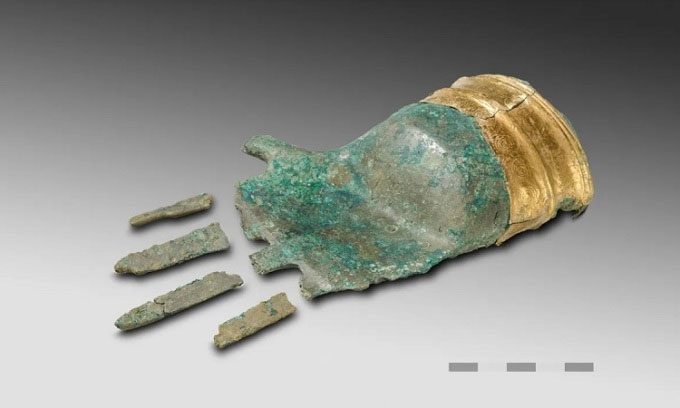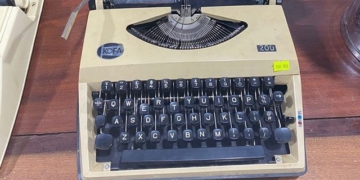Archaeologists report that a 3,500-year-old hand is slightly smaller than a real human hand, made from over 0.5 kg of bronze with a gold ring attached at the wrist.

The bronze hand and broken fingers found in the grave. (Photo: Philippe Joner)
The bronze hand adorned with a gold ring was discovered in 2017 near Lake Biel, west of Bern, by metal detectorists. They handed the hand over to authorities along with a bronze dagger and a rib bone found nearby, IFL Science reported on March 23. “We have never seen anything like this,” shared Andrea Schaer, head of the Department of Ancient History and Roman Archaeology at the Bern Archaeological Office.
By dating a tiny piece of organic resin used to attach the gold ring to the wrist, archaeologists determined that this object is very ancient, dating back to the Middle Bronze Age, around 1500 – 1500 BC. They returned to the site where the bronze hand was found and spent seven weeks excavating the heavily damaged grave located on the plateau above Lake Biel, near the village of Prêles.
Within the grave, researchers found the bones of a middle-aged man along with a bronze pin and a spiraled object that could have been used to tie hair, as well as a piece of gold leaf similar to the gold ring on the hand. The research team also collected broken fingers from the bronze hand, indicating that the hand was originally buried with the man.
Metal objects in Bronze Age graves are extremely rare, especially gold. Archaeologists consider the bronze hand to be a unique find in Europe. However, they are still uncertain about the hand’s original purpose. The hole in the palm suggests it could have been used as decoration on a statue or as a prosthetic hand in a ritual. Unfortunately, due to the artifact being taken from the grave by thieves, it is impossible to determine how the hand was arranged alongside the man’s body initially.


















































